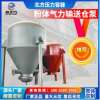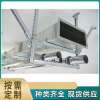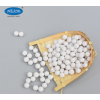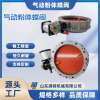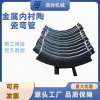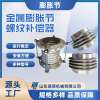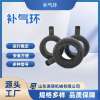研磨材料价格:4650.00元/吨 有效期至:长期有效
碳化硅SIC
SiC,其硬度介于刚玉和金刚石之间,机械强度高于刚玉,可作为磨料和其他某些工业材料使用。工业用碳化硅于1891年研制成功,是最早的人造磨料。在陨石和地壳中虽有少量碳化硅存在,但迄今尚未找到可供开采的矿源。 纯碳化硅是无色透明的晶体。工业碳化硅因所含杂质的种类和含量不同,而呈浅黄、绿、蓝乃至黑色,透明度随其纯度不同而异。碳化硅晶体结构分为六方或菱面体的 α-SiC和立方体的β-SiC(称立方碳化硅)。α-SiC由于其晶体结构中碳和硅原子的堆垛序列不同而构成许多不同变体,已发现70余种。β-SiC于2100℃以上时转变为α-SiC。
碳化硅的工业制法是用优质石英砂和石油焦在电阻炉内炼制。炼得的碳化硅块,经破碎、酸碱洗、磁选和筛分或水选而制成各种粒度的产品。 碳化硅有黑碳化硅和绿碳化硅两个常用的基本品种,都属α-SiC。①黑碳化硅含SiC约98.5%,其韧性高于绿碳化硅,大多用于加工抗张强度低的材料,如玻璃、陶瓷、石材、耐火材料、铸铁和有色金属等。②绿碳化硅含SiC99%以上,自锐性好,大多用于加工硬质合金、钛合金和光学玻璃,也用于珩磨汽缸套和精磨高速钢刀具。此外还有立方碳化硅,它是以特殊工艺制取的黄绿色晶体,用以制作的磨具适于轴承的超精加工,可使表面粗糙度从Ra32~0.16微米一次加工到Ra0.04~0.02微米。 碳化硅由于化学性能稳定、导热系数高、热膨胀系数小、耐磨性能好,除作磨料用外,还有很多其他用途,例如:以特殊工艺把碳化硅粉末涂布于水轮机叶轮或汽缸体的内壁,可提高其耐磨性而延长使用寿命1~2倍;用以制成的高级耐火材料,耐热震、体积小、重量轻而强度高,节能效果好。低品级碳化硅(含SiC约85%)是极好的脱氧剂,用它可加快炼钢速度,并便于控制化学成分,提高钢的质量。此外,碳化硅还大量用于制作电热元件硅碳棒。
用途(1)作为磨料,可用来做磨具,如砂轮、油石、磨头、砂瓦类等。 (2)作为冶金脱氧剂和耐高温材料。 碳化硅主要有四大应用领域,即: 功能陶瓷、高级耐火材料、磨料及冶金原料。目前碳化硅粗料已能大量供应, 不能算高新技术产品,而技术含量极高 的纳米级碳化硅粉体的应用短时间不可能形成规模经济。 (3)高纯度的单晶,可用于制造半导体、制造碳化硅纤维。
产地、输往国别及品质规格(1)产地:长白山脉、河南、青海、宁夏、四川、贵州、湖北丹江口等地。 (2)输往国别:美国、日本、韩国、及某些欧洲国家。 (3)品质规格: ①磨料级碳化硅技术条件按GB/T2480—96。各牌号的化学成分由表6-6-47和表6-6-48给出。 ②磨料粒度及其组成按GB/T2477—83。磨料粒度组成测定方法按GB/T2481—83。 GB/T 9258.1-2000|涂附磨具用磨料 粒度分析 第1部分:粒度组成 GB/T 9258.2-2008|涂附磨具用磨料 粒度分析 第2部分:粗磨粒P12~P220粒度组成的测定 GB/T 9258.3-2000|涂附磨具用磨料 粒度分析 第3部分:微粉P240~P2500粒度组成的测定
具体理化指标| 项目 | SiC | Fe2O3 | F.C | 比重 |
| Ⅰ | ≥97% | ≤1.2% | ≤0.3% | 3.2g/cm3 |
| Ⅱ | ≥90% | ≤1.5% | ≤0.5% |
是由美国人艾奇逊在1891年电熔金刚石实验时,在实验室偶然发现的一种碳化物,当时误认为是金刚石的混合体,故取名金刚砂,1893年艾奇逊研究出来了工业冶炼碳化硅的方法,也就是大家常说的艾奇逊炉,一直沿用至今,以碳质材料为炉芯体的电阻炉,通电加热石英SIO2和碳的混合物生成碳化硅。
发展关于碳化硅的几个事件 1905年 第一次在陨石中发现碳化硅 1907年 第一只碳化硅发光二极管诞生 1955年 理论和技术上重大突破,LELY提出生长高品质碳化概念,从此将SIC作为重要的电子材料 1958年 在波士顿召开第一次世界碳化硅会议进行学术交流 1978年 六、七十年代碳化硅主要由前苏联进行研究。到1978年首次采用“LELY改进技术”的晶粒提纯生长方法 1987年~至今以CREE的研究成果建立碳化硅生产线,供应商开始提供商品化的碳化硅基SiC,其硬度介于刚玉和金刚石之间,机械强度高于刚玉,可作为磨料和其他某些工业材料使用。工业用碳化硅于1891年研制成功,是最早的人造磨料。在陨石和地壳中虽有少量碳化硅存在,但迄今尚未找到可供开采的矿源。
纯碳化硅是无色透明的晶体。工业碳化硅因所含杂质的种类和含量不同,而呈浅黄、绿、蓝乃至黑色,透明度随其纯度不同而异。碳化硅晶体结构分为六方或菱面体的 α-SiC和立方体的β-SiC(称立方碳化硅)。α-SiC由于其晶体结构中碳和硅原子的堆垛序列不同而构成许多不同变体,已发现70余种。β-SiC于2100℃以上时转变为α-SiC。
碳化硅的工业制法是用优质石英砂和石油焦在电阻炉内炼制。炼得的碳化硅块,经破碎、酸碱洗、磁选和筛分或水选而制成各种粒度的产品。
碳化硅有黑碳化硅和绿碳化硅两个常用的基本品种,都属α-SiC。①黑碳化硅含SiC约98.5%,其韧性高于绿碳化硅,大多用于加工抗张强度低的材料,如玻璃、陶瓷、石材、耐火材料、铸铁和有色金属等。②绿碳化硅含SiC99%以上,自锐性好,大多用于加工硬质合金、钛合金和光学玻璃,也用于珩磨汽缸套和精磨高速钢刀具。此外还有立方碳化硅,它是以特殊工艺制取的黄绿色晶体,用以制作的磨具适于轴承的超精加工,可使表面粗糙度从Ra32~0.16微米一次加工到Ra0.04~0.02微米。
碳化硅由于化学性能稳定、导热系数高、热膨胀系数小、耐磨性能好,除作磨料用外,还有很多其他用途,例如:以特殊工艺把碳化硅粉末涂布于水轮机叶轮或汽缸体的内壁,可提高其耐磨性而延长使用寿命1~2倍;用以制成的高级耐火材料,耐热震、体积小、重量轻而强度高,节能效果好。低品级碳化硅(含SiC约85%)是极好的脱氧剂,用它可加快炼钢速度,并便于控制化学成分,提高钢的质量。此外,碳化硅还大量用于制作电热元件硅碳棒。
碳化硅的硬度很大,具有优良的导热性能,是一种半导体,高温时能抗氧化。
用途(1)作为磨料,可用来做磨具,如砂轮、油石、磨头、砂瓦类等。
(2)作为冶金脱氧剂和耐高温材料。
碳化硅主要有四大应用领域,即: 功能陶瓷、高级耐火材料、磨料及冶金原料。目前碳化硅粗料已能大量供应, 不能算高新技术产品,而技术含量极高 的纳米级碳化硅粉体的应用短时间不可能形成规模经济。
(3)高纯度的单晶,可用于制造半导体、制造碳化硅纤维。
产地、输往国别及品质规格(1)产地:长白山脉、河南、青海、宁夏、四川、贵州、湖北丹江口等地。
(2)输往国别:美国、日本、韩国、及某些欧洲国家。
(3)品质规格:
①磨料级碳化硅技术条件按GB/T2480—96。各牌号的化学成分由表6-6-47和表6-6-48给出。
②磨料粒度及其组成按GB/T2477—83。磨料粒度组成测定方法按GB/T2481—83。
GB/T 9258.1-2000|涂附磨具用磨料 粒度分析 第1部分:粒度组成
GB/T 9258.2-2008|涂附磨具用磨料 粒度分析 第2部分:粗磨粒P12~P220粒度组成的测定
GB/T 9258.3-2000|涂附磨具用磨料 粒度分析 第3部分:微粉P240~P2500粒度组成的测定
具体理化指标| 项目 | SiC | Fe2O3 | F.C | 比重 |
| Ⅰ | ≥97% | ≤1.2% | ≤0.3% | 3.2g/cm3 |
| Ⅱ | ≥90% | ≤1.5% | ≤0.5% |
是由美国人艾奇逊在1891年电熔金刚石实验时,在实验室偶然发现的一种碳化物,当时误认为是金刚石的混合体,故取名金刚砂,1893年艾奇逊研究出来了工业冶炼碳化硅的方法,也就是大家常说的艾奇逊炉,一直沿用至今,以碳质材料为炉芯体的电阻炉,通电加热石英SIO2和碳的混合物生成碳化硅。
发展关于碳化硅的几个事件
1905年 第一次在陨石中发现碳化硅
1907年 第一只碳化硅发光二极管诞生
1955年 理论和技术上重大突破,LELY提出生长高品质碳化概念,从此将SIC作为重要的电子材料
1958年 在波士顿召开第一次世界碳化硅会议进行学术交流
1978年 六、七十年代碳化硅主要由前苏联进行研究。到1978年首次采用“LELY改进技术”的晶粒提纯生长方法
1987年~至今以CREE的研究成果建立碳化硅生产线,供应商开始提供商品化的碳化硅基
SiC, the hardness range between corundum and diamond, the mechanical strength than alumina can be used as abrasives and other materials used in certain industries.Industrial successful development of silicon carbide in 1891, was the first man-made abrasives.Although in the meteorite and the Earth's crust there is a small amount of silicon carbide, but has yet to find the source of ore available for mining.Pure SiC is colorless and transparent crystal.Industrial silicon carbide due to impurities contained in different types and levels, but was light yellow, green, blue and even black, transparency varies with its purity.SiC crystal structure is divided into six or rhombohedron of α-SiC and cubic β-SiC (called cubic silicon carbide).α-SiC crystal structure because of its carbon and silicon atoms form different stacking sequence of many different variants have been found in 70 species.β-SiC at 2100 ℃ above into α-SiC.
Silicon carbide industrial production method is high-quality quartz sand and petroleum coke in the resistance furnace refining.Mixing silicon carbide blocks obtained by crushing, acid washing, magnetic separation and water screening or selection of products made of various size.Black and green silicon carbide silicon carbide silicon carbide used two basic varieties, are considered α-SiC.① black silicon carbide SiC containing about 98.5%, higher than the toughness of the green silicon carbide, mostly for the processing of low tensile strength materials such as glass, ceramics, stone, refractory material, cast iron and non-ferrous metals.② green silicon carbide with SiC99% or more, since the sharpness is good, mostly for processing hard alloy, titanium alloy and optical glass, also used for honing cylinder liners and grinding high speed steel cutting tools.There are also cubic silicon carbide, which is a special process Preparation of yellow-green crystals, suitable for the production of bearings super abrasive finishing, make the surface roughness Ra32 ~ 0.16 micron from a process to Ra0.04 ~0.02 micron.As the chemical properties of silicon carbide stability, high thermal conductivity, thermal expansion coefficient, good wear resistance, in addition to abrasive used, there are many other uses, such as: a special technique to silicon carbide powder coating on the turbine impeller or cylinder blockwall, can improve the wear resistance and extend the service life of 1 to 2 times; made of high-level refractory material used, heat shock, small volume, weight light and high strength, good energy saving effect.Low-grade silicon carbide (SiC containing about 85%) is an excellent deoxidizing agent, use it to speed up the steel-making speed, and easy to control the chemical composition, to improve the quality of steel.In addition, silicon carbide is also used extensively for production of silicon carbide heating elements.
Use
(1) as the abrasive, can be used for abrasive, such as grinding wheels, whetstone, grinding wheel, sand tiles etc.(2) as a deoxidizing agent and high temperature materials, metallurgy.SiC there are four main application areas, namely: functional ceramics, advanced refractories, abrasives and metallurgical materials.Silicon carbide has been able to present an abundant supply of coarse material, can not be considered high-tech products, high-tech application of nano-silicon carbide powder is impossible to form a short time scale.(3) high purity single crystal, can be used to manufacture semiconductors, manufacture of silicon carbide fibers.
Place of origin, exports to the country and quality specifications
(1) Origin: Changbai Mountains, Henan, Qinghai, Ningxia, Sichuan, Guizhou, Hubei, Dan, etc..(2) exports to the country: the United States, Japan, Korea, and some European countries.(3) Specification: ① grade silicon carbide abrasive technical conditions by GB/T2480-96.The chemical composition of various grades in Table 6-6-47 and Table 6-6-48 shows.② abrasive particle size and composition by GB/T2477-83.Abrasive grain size determination by GB/T2481-83.GB / T 9258.1-2000 | coated abrasives size analysis Part 1: Grain size GB / T 9258.2-2008 | coated abrasives size analysis Part 2: coarse grain abrasive P12 ~ P220degree of determination of the composition of GB / T 9258.3-2000 | coated abrasives size analysis Part 3: Powder P240 ~ P2500 Determination of particle size
Specific physical and chemical indicators
The proportion of the project SiC Fe2O3 F.C
Ⅰ ≥ 97% ≤ 1.2% ≤ 0.3% 3.2g/cm3
Ⅱ ≥ 90% ≤ 1.5% ≤ 0.5%
Origin
Acheson by the American experiment in 1891, when fused diamond, found by chance in the laboratory of a carbide, was mistaken for a mixture of diamond, so named Emery, 1893, Acheson's research in industrialmethod of refining silicon carbide, that is, we often say that the Acheson furnace, has been in use ever since, with carbonaceous material body resistance furnace stoves, electric heating a mixture of quartz SIO2 generation silicon carbide and carbon.
Developing
Several events on the silicon carbide in 1905 the first meteorite found in 1907, the first silicon carbide light emitting diode only the birth of the theory and technology in 1955, a major breakthrough, LELY proposed the concept of the growth of high-quality carbon, from the SIC as an importantElectronic Materials held in Boston in 1958, the first World Conference on Silicon Carbide in 1978, six academic exchanges, mainly by silicon carbide seventies to study the former Soviet Union.The first time in 1978, "LELY improved technology," the growth of the grain refining method in 1987 ~ to date research results CREE SiC production line set up, suppliers are beginning to provide the commercialization of silicon carbide-based SiC, the hardness between corundum and diamondbetween mechanical strength than alumina can be used as abrasives and other materials used in certain industries.Industrial successful development of silicon carbide in 1891, was the first man-made abrasives.Although in the meteorite and the Earth's crust there is a small amount of silicon carbide, but has yet to find the source of ore available for mining.
Pure SiC is colorless and transparent crystal.Industrial silicon carbide due to impurities contained in different types and levels, but was light yellow, green, blue and even black, transparency varies with its purity.SiC crystal structure is divided into six or rhombohedron of α-SiC and cubic β-SiC (called cubic silicon carbide).α-SiC crystal structure because of its carbon and silicon atoms form different stacking sequence of many different variants have been found in 70 species.β-SiC at 2100 ℃ above into α-SiC.
Silicon carbide industrial production method is high-quality quartz sand and petroleum coke in the resistance furnace refining.Mixing silicon carbide blocks obtained by crushing, acid washing, magnetic separation and water screening or selection of products made of various size.
Black and green silicon carbide silicon carbide silicon carbide used two basic varieties, are considered α-SiC.① black silicon carbide SiC containing about 98.5%, higher than the toughness of the green silicon carbide, mostly for the processing of low tensile strength materials such as glass, ceramics, stone, refractory material, cast iron and non-ferrous metals.② green silicon carbide with SiC99% or more, since the sharpness is good, mostly for processing hard alloy, titanium alloy and optical glass, also used for honing cylinder liners and grinding high speed steel cutting tools.There are also cubic silicon carbide, which is a special process Preparation of yellow-green crystals, suitable for the production of bearings super abrasive finishing, make the surface roughness Ra32 ~ 0.16 micron from a process to Ra0.04 ~0.02 micron.
As the chemical properties of silicon carbide stability, high thermal conductivity, thermal expansion coefficient, good wear resistance, in addition to abrasive used, there are many other uses, such as: a special technique to silicon carbide powder coating on the turbine impeller or cylinder blockwall, can improve the wear resistance and extend the service life of 1 to 2 times; made of high-level refractory material used, heat shock, small volume, weight light and high strength, good energy saving effect.Low-grade silicon carbide (SiC containing about 85%) is an excellent deoxidizing agent, use it to speed up the steel-making speed, and easy to control the chemical composition, to improve the quality of steel.In addition, silicon carbide is also used extensively for production of silicon carbide heating elements.
Silicon carbide is very hard, has excellent thermal conductivity, is a semiconductor, high temperature resistant to oxidation.
Use
(1) as the abrasive, can be used for abrasive, such as grinding wheels, whetstone, grinding wheel, sand tiles etc.
(2) as a deoxidizing agent and high temperature materials, metallurgy.
SiC there are four main application areas, namely: functional ceramics, advanced refractories, abrasives and metallurgical materials.Currently coarse silicon carbide have been available in large numbers, can not be considered high-tech products, high-tech applications nanometer silicon carbide powder is impossible to form a short time scale.
(3) high purity single crystal, can be used to manufacture semiconductors, manufacture of silicon carbide fibers.
Place of origin, exports to the country and quality specifications
(1) Origin: Changbai Mountains, Henan, Qinghai, Ningxia, Sichuan, Guizhou, Hubei, Dan, etc..
(2) exports to the country: the United States, Japan, Korea, and some European countries.
(3) Specification:
① grade silicon carbide abrasive technical conditions by GB/T2480-96.The chemical composition of various grades in Table 6-6-47 and Table 6-6-48 shows.
② abrasive particle size and composition by GB/T2477-83.Abrasive grain size determination by GB/T2481-83.
GB / T 9258.1-2000 | coated abrasives size analysis Part 1: Grain size
GB / T 9258.2-2008 | coated abrasives size analysis Part 2: coarse grain P12 ~ P220 Determination of particle size
GB / T 9258.3-2000 | coated abrasives size analysis Part 3: Powder P240 ~ P2500 Determination of particle size
Specific physical and chemical indicators
The proportion of the project SiC Fe2O3 F.C
Ⅰ ≥ 97% ≤ 1.2% ≤ 0.3% 3.2g/cm3
Ⅱ ≥ 90% ≤ 1.5% ≤ 0.5%
Origin
Acheson by the American experiment in 1891, when fused diamond, found by chance in the laboratory of a carbide, was mistaken for a mixture of diamond, so named Emery, 1893, Acheson's research in industrialmethod of refining silicon carbide, that is, we often say that the Acheson furnace, has been in use ever since, with carbonaceous material body resistance furnace stoves, electric heating a mixture of quartz SIO2 generation silicon carbide and carbon.
Developing
Several events on the silicon carbide
1905, the first meteorite found in silicon carbide
1907, the first born only silicon carbide light-emitting diode
Theory and technology in 1955, a major breakthrough, LELY proposed the concept of the growth of high-quality carbon, from the SIC as an important electronic materials
Held in Boston in 1958, the first world conference for academic exchange of silicon carbide
1978, 6, 70 mainly former Soviet union Carbide's research.The first time in 1978, "LELY improved technology," Purification of Grain Growth Method
CREE 1987 ~ present research results to build silicon carbide production lines, commercial vendors began offering the silicon carbide base
| 原产地 | 河南 | 含量≥ | 98(%) |
| 密度 | 3.2(g/cm3) |
以上"0-1mm耐材用98%碳化硅15538270530"信息由企业自行提供,该企业负责信息内容的真实性、准确性和合法性。本网对此不承担任何保证责任。






